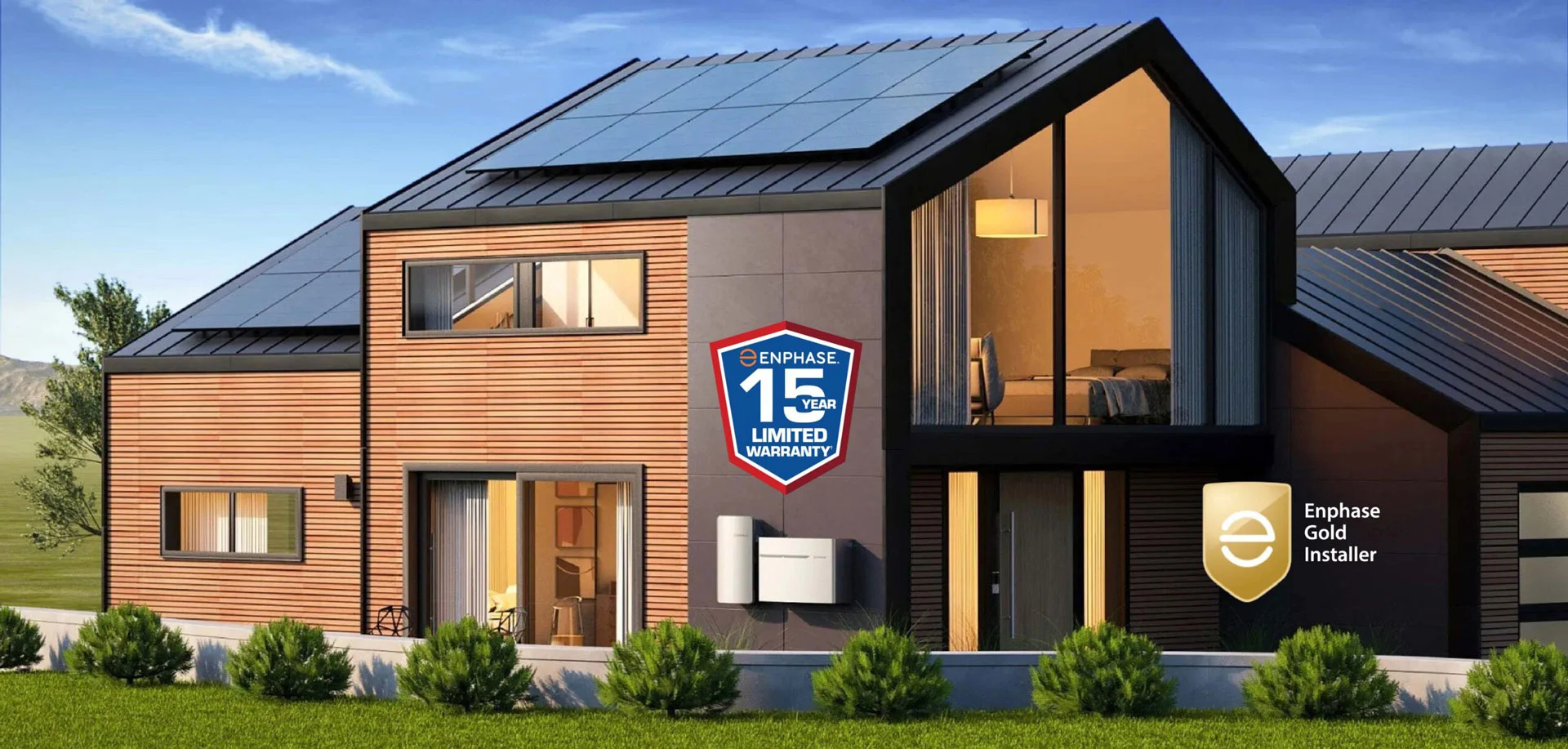




If you're shopping for a home battery, the Tesla Powerwall is probably the first name you came across. It’s popular for good reason. Tesla builds powerful, sleek and reliable products that many homeowners love.
But Powerwall isn’t always the right fit for everyone. Some homeowners need faster installation, others want a system that’s easier to expand later, and some are simply looking for something more budget-friendly.
At Semper Solaris, we install both Tesla and Enphase because each offers real advantages:
If you're set on Tesla, you’re getting one of the best batteries available. But if you're exploring other options, Enphase is hands down the most capable and homeowner-friendly alternative on the market today. Keep reading to see why.
A home battery stores extra energy from your solar panels. Instead of sending that power back to the grid, you keep it on-site for later – especially during:
In California, where NEM 3.0 has changed how solar credits work, having a battery lets you maximize your system and reduce your reliance on the grid.
Tesla Powerwall is a strong choice, especially for those who are already in the Tesla ecosystem. But depending on your situation, it might not be the perfect fit.
Homeowners often explore alternatives like Enphase when they already have Enphase solar microinverters or want to expand their battery system gradually instead of all at once. In these cases, Enphase isn’t just an alternative. It may be the better match.
Enphase Energy is known for its smart, flexible energy systems. Their solar batteries and microinverter technology make them a strong choice for homeowners who want reliability, customization, and smart software.
Here’s why Enphase stands out:
Unlike centralized systems, Enphase batteries are modular. Each unit contains its own micro inverter, which helps maintain power even if one unit goes offline. You can start with one battery and add more as your needs grow.
With the Enphase Enlighten app, you can track your solar performance, battery storage, and power outputs down to the panel level. It’s ideal for homeowners who like data transparency and control.
Because Enphase products are designed to work together, they’re easier and quicker to install—especially when paired with existing solar setups. That means you can get your system online sooner, with fewer delays.
Here’s a simplified look at how the Enphase IQ Battery compares to Tesla Powerwall 3:
| Feature | Enphase IQ Battery | Tesla Powerwall 3 |
| Storage Capacity | Modular (3.84 kWh units) | 13.5 kWh |
| Power Output | 1.28 kW per unit | 11.5 kW continuous |
| Battery Chemistry | Lithium Iron Phosphate (LFP) | Lithium Ion (NMC) |
| Backup Power | Yes (Smart Switch) | Yes |
| Expandability | Easily scalable | Stackable (up to 10 units) |
| Monitoring App | Enlighten App | Tesla App |
| Inverter | Microinverter-based | Built-in hybrid inverter |
| Installation Speed | Typically faster | May vary by demand |
Enphase is one of the best Powerwall alternatives for homeowners who:
It’s also a great fit for homes in fire-prone or outage-prone areas, thanks to Enphase’s lithium iron phosphate (LFP) battery chemistry, which offers excellent thermal stability.
Installing a solar battery qualifies for major financial incentives in 2025, including:
These programs can lower your upfront cost by thousands, making energy storage more accessible for California homeowners.
Semper Solaris is a veteran-owned, California-based company trusted for solar, roofing, HVAC, and battery installation. We’re certified to install both Tesla and Enphase systems, and we’re here to help you choose what works best—not just what’s popular.
With us, you’ll get:
The Tesla Powerwall is an excellent solar battery. But if you need more flexibility, easier expansion, or faster installation, Enphase might be the better fit.
Semper Solaris installs both, and we’re here to help you make the right decision. If you’re ready to explore your battery options, let’s talk.